
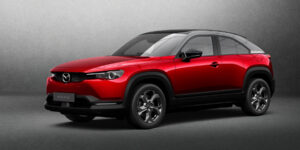
The MX-30 is a very curious vehicle. It’s Mazda’s first EV, but the company took a very tepid approach to making a battery electric. One thing’s for sure, it certainly doesn’t break any new ground.
First off, it looks like a conventional ICE car, both inside and out. There’s nothing wrong with that. In fact, the styling is quite attractive. It’s cute. It’s actually one of the strong points of the car. I especially liked the cork trim accents on the center console.
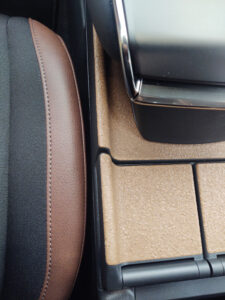
But the MX-30 doesn’t have that oh-my-gosh! kind of acceleration that is such an attractive feature of most electrics. Its 143 horsepower electric motor has to move 3,655 pounds of mass. That’s 1 hp for every 25 pounds, which is a decidedly pedestrian power-to-weight ratio. So, while acceleration is adequate, it’s not what we’d call “zoom-zoom.”
Even more, as you accelerate, it almost sounds like there’s a piston engine under the hood. Not a loud engine, mind you. But it’s not the whisper quiet experience that most EVs provide. It’s as if Mazda designed this EV for people who really aren’t sure if they’re ready for an EV, and who want the design and driving experience of a conventional IC car.
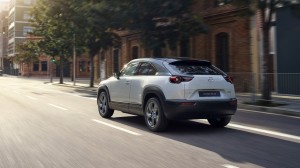
And all this shows up in its EPA efficiency rating: 37 kilowatt hours of electricity consumed for every 100 miles driven. That’s 32% less efficient than the bigger and faster Tesla Model 3 which only consumes 25 kWh/100 miles.
To keep the price down Mazda uses a small 35.5 kWh battery pack which only delivers 100 miles of EPA range. That doesn’t sound like a good sales strategy when consumers say that range anxiety is their greatest fear about buying an EV. But there is one advantage of that small battery: it charges rather quickly.
The price is another attractive point. About $34,645 for the base model and $37,655 for the premium version. Mazda qualifies for the federal EV tax credit, so most customers can knock $7,500 off those prices.
The MX-30 is a 4-door but the rear doors are tiny little openings that make getting in and out of the back seat a very tight squeeze indeed.
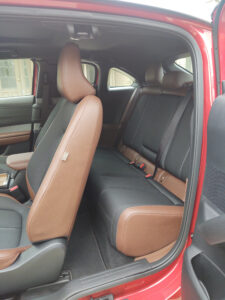
And don’t scrape your head on the latch post for the rear doors.
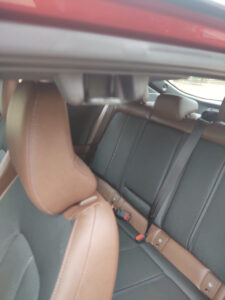
At least the back of the driver’s seat has buttons for a rear seat passenger to move or tilt the seat out of their way.
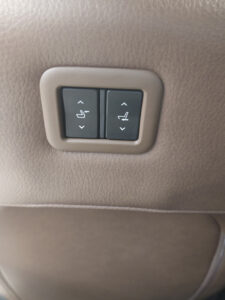
Mazda is only selling the MX-30 in California. And it only plans on selling 560 of them. But so far, it seems to be off target. In the first two months of 2022 Mazda only sold 79 of them. That suggests an annual sales rate of only 474 cars.
Despite my critiques, I do see a place for this car. It should appeal to someone who wants a cute electric that they will use for short hops of city driving, who wants it to charge quickly, and who wants to spend $30,000 or less.
Then, once Mazda sells out its allotment of MX-30s, I hope it takes the lessons learned and comes out with an electric that shows the world what it can really do.
By: John McElroy
Follow us on social media:

John McElroy is an influential thought leader in the automotive industry. He is a journalist, lecturer, commentator and entrepreneur. He created “Autoline Daily,” the first industry webcast of industry news and analysis.





